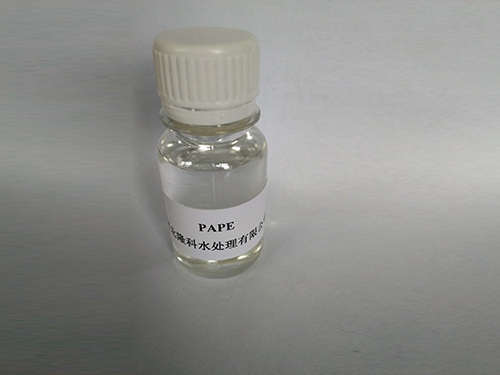cationic polyacrylamide flocculant
The Role of Cationic Polyacrylamide Flocculant in Water Treatment and Industry
Cationic polyacrylamide flocculant (CPAM) is a versatile polymer widely used in various industrial applications, particularly in water treatment processes. Characterized by its positive charge, CPAM plays a vital role in destabilizing suspended particles in water, facilitating their aggregation, and subsequent removal. This article delves into the properties, applications, and advantages of cationic polyacrylamide flocculant, explaining its significance in modern environmental management practices.
Properties of Cationic Polyacrylamide Flocculant
Cationic polyacrylamide is a synthetic polymer derived from acrylamide monomers. The presence of cationic groups in its structure gives CPAM a strong affinity for negatively charged particles, such as clay and other colloids often found in water sources. This charge neutrality allows CPAM to effectively neutralize the charges on these particles, promoting flocculation—the process whereby particles clump together to form larger aggregates, or flocs.
The molecular weight of CPAM can vary significantly, influencing its effectiveness depending on the specific application. High molecular weight CPAM is generally more effective for solid-liquid separation processes, while lower molecular weight variants may provide better performance in thickening applications. Additionally, CPAM is available in different forms, including liquid and powder, allowing for flexibility in usage based on operational requirements.
Applications in Water Treatment
The most prominent application of cationic polyacrylamide flocculant lies in wastewater treatment, where it is employed to remove suspended solids, oils, and organic matter from effluent
. Depending on the specific characteristics of the water being treated, CPAM can enhance sedimentation processes, making it easier to achieve compliance with environmental regulations.In municipal wastewater treatment plants, CPAM serves not only to improve the efficiency of sedimentation but also to enhance the dewatering of sludge. By facilitating the aggregation of fine sludge particles, CPAM reduces the volume of sludge that needs to be disposed of, leading to a reduction in overall treatment costs.
cationic polyacrylamide flocculant

Apart from municipal applications, CPAM is also widely used in industrial processes, such as mining, paper production, and oil recovery. In mining, CPAM assists in the separation of valuable minerals from tailings, while in the paper industry, it aids in the retention of fibers and fillers, enhancing paper quality. In the oil industry, cationic polyacrylamide flocculant can assist in the clarification of produced water and improve the recovery of crude oil from reservoirs.
Advantages of Cationic Polyacrylamide Flocculant
The advantages of using cationic polyacrylamide flocculant are numerous. Firstly, its ability to interact effectively with a wide range of materials allows for the treatment of various types of wastewater, making it a highly adaptable solution for different industries. This adaptability extends to its performance at varying pH levels and temperatures, ensuring consistent results under diverse operational conditions.
Secondly, CPAM is known for its efficiency in reducing the overall volume of sludge generated during treatment processes. This not only simplifies waste management but also results in lower disposal costs. Additionally, the improved sedimentation rates lead to shorter processing times, enhancing operational productivity.
Furthermore, the use of cationic flocculants often results in clearer effluent water, contributing to improved environmental compliance and reducing potential liabilities associated with water pollution.
Conclusion
Cationic polyacrylamide flocculant plays an indispensable role in contemporary water treatment and various industrial processes. Its unique properties, coupled with a wide range of applications, make it a preferred choice for many operators aiming to enhance efficiency, reduce costs, and comply with environmental standards. As industries continue to prioritize sustainable practices and effective waste management, CPAM will undoubtedly remain a key player in promoting cleaner water and a healthier environment. The future of flocculation technology appears promising, with cationic polyacrylamide leading the way in enabling industries to meet their operational and environmental goals.
-
Water Treatment with Flocculant Water TreatmentNewsJun.12,2025
-
Polymaleic AnhydrideNewsJun.12,2025
-
Polyaspartic AcidNewsJun.12,2025
-
Enhance Industrial Processes with IsothiazolinonesNewsJun.12,2025
-
Enhance Industrial Processes with PBTCA SolutionsNewsJun.12,2025
-
Dodecyldimethylbenzylammonium Chloride SolutionsNewsJun.12,2025





